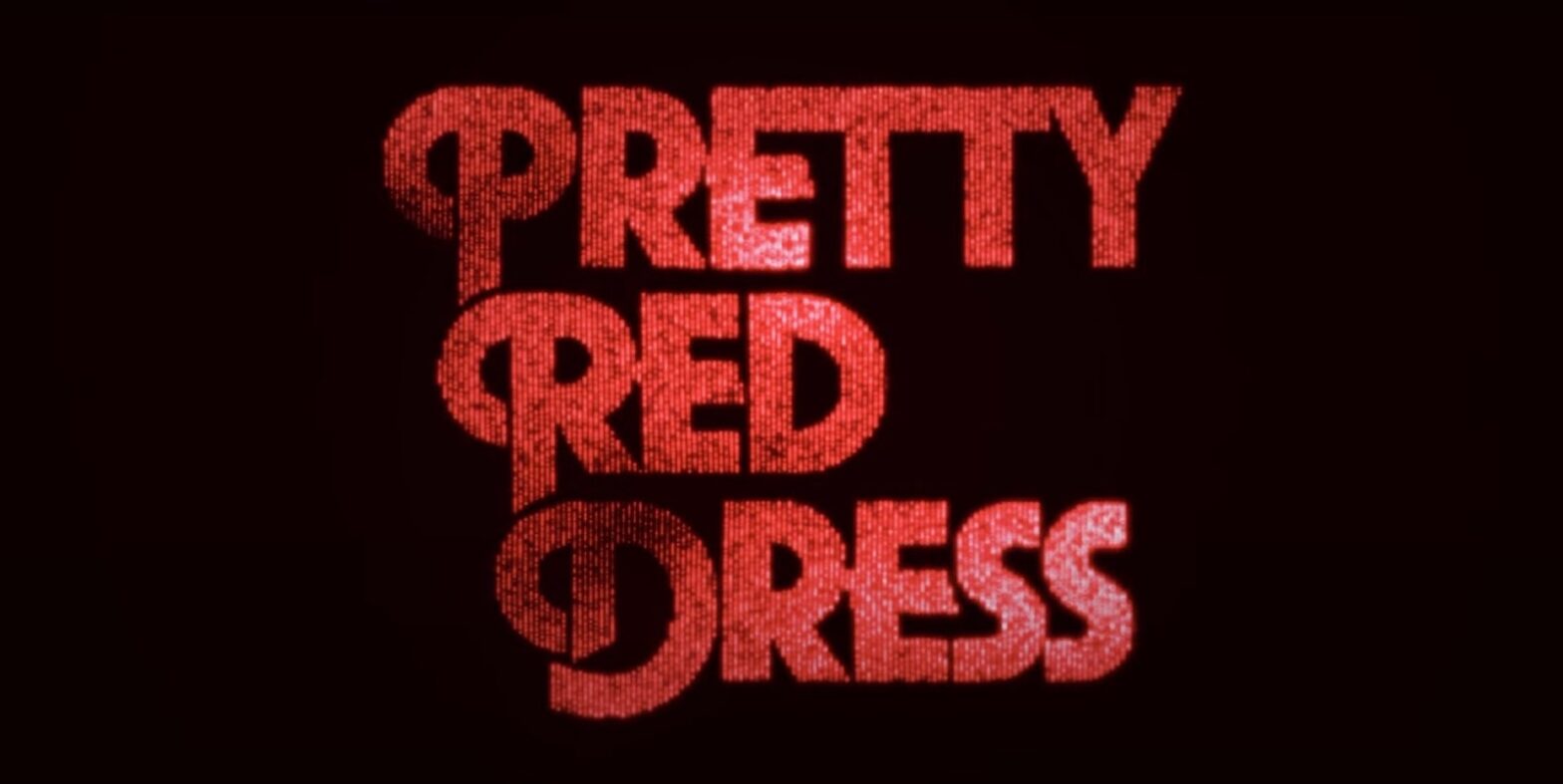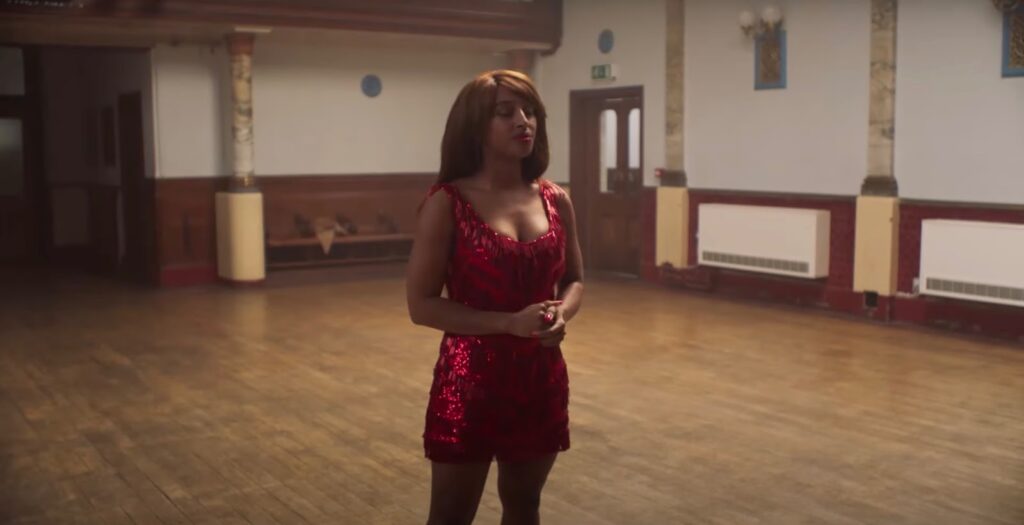
“Pretty Red Dress” Dionne Edwards 2023
In the realm of independent cinema, few films stir the soul and captivate the eye quite like Dionne Edwards’ “Pretty Red Dress.” With a palette of emotions and vibrant visuals, this 2023 film presents a sartorial narrative that weaves threads of personal identity, family dynamics, and the pursuit of self-expression.
The Genesis of “Pretty Red Dress”: Dionne Edwards’ Vision
In the eclectic realm of independent filmmaking, a visionary emerges sporadically who not only captures the zeitgeist but also etches an indelible mark on the canvas of cinema. Dionne Edwards is one such auteur whose latest oeuvre, “Pretty Red Dress,” is a tapestry woven from the threads of audacity and personal truth. Edwards, with her directorial acumen, has imbued this film with a life-force that pulsates through its narrative arc.
The inception of “Pretty Red Dress” is as captivating as the film itself. Edwards channeled her inspiration from the vibrant streets of London, the unspoken narratives of its inhabitants, and the transformative power of fashion. The dress in the film is not merely a garment but a character in itself—a catalyst for change and a beacon of self-liberation. It is a symbol that Edwards uses deftly to chart the journey of her characters from confinement to self-realization.
A Synopsis that Weaves Intrigue
Set against the backdrop of London’s teeming expanse, “Pretty Red Dress” introduces us to a narrative that is both intimate and universal. The story orbits around a simple yet evocative premise: a red dress—a harbinger of change that weaves together the lives of a British family confronting their innermost desires and fears.
Story Arc of “Pretty Red Dress”:
| Act | Description |
|---|---|
| Introduction | The red dress makes its first appearance, disrupting the family’s status quo. |
| Rising Action | Each character’s relationship with the dress begins to mirror their personal struggles. |
| Climax | The pivotal moment where the dress catalyzes a profound change. |
| Resolution | The family’s journey culminates in a nuanced tapestry of resolution and growth. |
Cast Ensemble: Characters Brought to Life
The film’s casting is a mosaic of talent, with each actor infusing their role with a unique blend of subtlety and depth. The characters are etched with precision, mirroring the intricate stitching of the titular red dress itself.
List of Main Cast:
- Character: Travis – The father figure grappling with tradition and modernity;
- Actor: A veteran thespian known for his gravitas;
- Character: Naomi – The matriarch whose past is as colorful as the dress;
- Actor: A critically acclaimed actress celebrated for her emotive prowess;
- Character: Tasha – The daughter, whose dreams are woven into the dress’s fabric;
- Actor: A breakout star whose performance is as luminous as her character’s aspirations.
The Aesthetic Brilliance: Cinematography and Settings
Edwards’ “Pretty Red Dress” is a visual banquet, employing the vast palette of London’s urban tapestry. The cinematography, both lush and grounded, provides a stark canvas where the red dress burns brightly, symbolizing the pulse of life amidst the concrete and cobblestones. The settings oscillate between the claustrophobic interiors of London homes and the liberating expanse of the city, each frame meticulously crafted to complement the narrative’s tone.

Soundtrack and Score: An Auditory Journey
The film’s score is a character in its own right, a richly orchestrated journey that marries visual cues with auditory motifs. Each note is carefully woven into the fabric of the film, with leitmotifs that resonate with the characters’ arcs, embodying their fears, hopes, and triumphs.
Narrative Threads: Exploring Themes and Symbolism
Themes of identity, empowerment, and familial ties are threaded through the narrative, making “Pretty Red Dress” a rich tapestry of human experience. The red dress serves as a powerful symbol—of ambition, desire, and the sometimes arduous journey towards self-fulfillment.
The Director’s Cut: Dionne Edwards’ Filmmaking Style
Dionne Edwards’ directorial style is characterized by an unerring intimacy that captures the nuances of human emotions. Her lens is compassionate, yet unflinching in its honesty. In “Pretty Red Dress,” Edwards employs a visual language that is both eloquent and evocative, drawing viewers into the inner world of her characters. Her storytelling is a dance of shadows and light, where each frame is deliberate, each movement calculated to enhance the narrative.
Her approach is a blend of poetic realism and vibrant stylization, creating a film that is as much a feast for the senses as it is a deep dive into the psyche. Edwards’ “Pretty Red Dress” is a canvas where her characters live, breathe, and transform, painted with strokes of cinematic genius.
Critical Acclaim and Reception
Since its debut, “Pretty Red Dress” has stirred the waters of the independent film scene, eliciting a chorus of acclaim. Critics have lauded the film for its emotional depth, its aesthetic achievements, and its deft portrayal of universal themes through a distinctly personal lens.
Critical Reception:
| Aspect | Critic’s Commentary |
|---|---|
| Storytelling | “A narrative that unfolds with the precision and grace of a well-choreographed ballet.” |
| Performances | “A cast ensemble that brings depth and authenticity to each frame.” |
| Cinematography | “A visual journey that captures the very soul of London.” |
| Soundtrack | “A score that weaves itself seamlessly into the tapestry of the film.” |
| Direction | “Edwards showcases a masterclass in filmmaking with a touch that is both gentle and powerful.” |
Influence on Fashion and Culture
“Pretty Red Dress” transcends the boundaries of the screen to imprint itself upon the very fabric of culture and fashion. The film has sparked dialogues not just about fashion as a statement, but as a narrative tool—a means of expressing identity and challenging norms. The titular red dress has become emblematic, inspiring fashion designers and enthusiasts to view clothing as a vehicle for storytelling and personal expression.

Behind the Seams: Production Insights
The journey from concept to screen for “Pretty Red Dress” is fraught with the kind of challenges that define independent filmmaking. The production was a symphony of collaboration, with every department—from costume design to set decoration—working in harmony to bring Edwards’ vision to life.
Production Milestones:
| Milestone | Insight |
|---|---|
| Script Development | A process of meticulous crafting, where each line of dialogue was honed to perfection. |
| Casting | A search for actors who could embody the complex emotional landscape of the characters. |
| Filming | A shoot that navigated the vibrant chaos of London to capture the city’s essence. |
| Post-Production | A period of editing, scoring, and color grading that added the final touches to a cinematic gem. |
Future of Film: Impact of Dionne Edwards’ Work
Dionne Edwards stands as a beacon for what the future of film could be—diverse, profound, and unapologetically authentic. Her work on “Pretty Red Dress” signals a shift in the landscape of cinema, where the richness of different voices and stories is not just recognized but celebrated. Edwards’ influence extends beyond the frames of her film, potentially ushering in an era where independent film is synonymous with innovation and inclusivity.
“Pretty Red Dress” and the Liaison with Liola National Theatre
When considering the theatrical release of “Pretty Red Dress,” the choice of venue is as crucial as the narrative itself. The Liola National Theatre, known for its bold programming and embrace of groundbreaking works, becomes an emblematic home for the film’s stage adaptation. The intertwining of Dionne Edwards’ cinematic vision with the storied tapestries of the Liola creates a symbiosis that elevates the film’s theatrical experience.
Why Liola National Theatre is the Perfect Venue:
- Historical Significance: The Liola has been a crucible for innovative theater, often bridging the gap between classical and contemporary;
- Architectural Grandeur: With its imposing structure, the Liola becomes a character in itself, mirroring the film’s thematic richness;
- Audience Demographics: The theater attracts a diverse audience, akin to the universal appeal of “Pretty Red Dress”;
- Technical Facilities: The state-of-the-art stage technology enhances the film’s transition from screen to stage, ensuring the integrity of visual and auditory storytelling.
The theater’s commitment to diversity and storytelling that pushes boundaries aligns with Edwards’ vision, making it a fitting venue for the film’s adaptation. The Liola National Theatre not only serves as a stage but as a catalyst that propels “Pretty Red Dress” into the cultural consciousness, allowing it to resonate with a broader audience.
The Synergy between “Pretty Red Dress” and Liola National Theatre:
| Element | “Pretty Red Dress” | Liola National Theatre |
|---|---|---|
| Vision | To showcase diverse stories through film. | To present diverse narratives on stage. |
| Impact | Influences fashion and culture. | Influences theatrical trends and dialogues. |
| Audience | Seeks to connect with a universal audience. | Hosts a demographic seeking compelling stories. |
| Experience | Provides a cinematic journey. | Offers an immersive theatrical experience. |
Conclusion
In conclusion, “Pretty Red Dress” is not merely a film but a movement—a narrative revolution encapsulated in celluloid. It’s a piece that exemplifies the power of independent cinema to not only reflect society but also to shape it. Dionne Edwards, through her film, invites audiences to look beyond the fabric of the red dress, into the heart of what it means to be human—to dream, to struggle, and ultimately, to find oneself.
This film is a clarion call for the industry to embrace diversity in storytelling and for viewers to seek out tales that challenge, entertain, and inspire. “Pretty Red Dress” is a testament to the enduring impact of cinema and the indomitable spirit of those who dare to tell stories that matter.